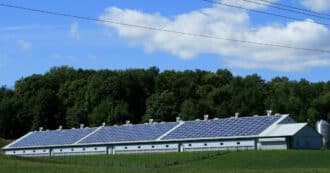By Sabrina Cooper – Beneath the veneer of pollution and extreme weather lies one of the biggest challenges posed by encroaching climate change – water resilience.
America and the world as a whole wastes a huge amount of precious freshwater, which forms only 0.5% of the world’s supply – according to the Berkeley Economic Review, 6 billion gallons of water are lost every day.
With drought rising in the USA and now at crisis levels in East Africa and the Arabian Peninsula, it is staggering how much could be done to build resilience. While governmental and policy change is required to make long-term change, businesses have a part to play – and they stand to improve their revenue by taking part.
The Cost of Water
Studies have been conducted on the potential financial benefits of stopping water leaks, and the crucial factor involved is that it’s a lot more efficient than putting in expensive water-retaining technologies.
One study published by IOP Science found that simple water retention policies could save 34.7% of water losses every year, costing only $277 per acre-feet in urban settings.
Simple changes, such as assessing water flow systems in the business and using modern materials to move water, can achieve this.
There’s also the reputational aspect to consider. According to the American Marketing Association, nearly 90% of millennials now desire sustainability as part of every purchase – they’re willing to pay more for products where the parent company is “green and clean.”
Moreover, they are willing to restrict their custom for businesses with a bad reputation. There is a clear business case for water sustainability and resilience, and there’s more that businesses can do beyond just fixing leaks.
Using Smart Water Measures
As well as looking at non-deliberate water loss, businesses should consider smart irrigation methods to ensure that their deliberate water usage is as finely controlled as possible.
Again, there’s a huge business incentive to do so; according to Landscape America, up to 50% of water bills can be saved by simply using irrigation systems that engage smartly with the landscape rather than simply dousing it in water without any fine control.
This can be managed in one of two ways. Firstly, businesses can use rotational irrigation to ensure that only plants that demand water will receive it by looking at growing seasons.
Secondly, using smart water sensors embedded within the soil can give a fine picture of exactly what needs watering and what doesn’t – giving supreme control over the water amounts used.
Moving to Water-Positive Landscapes
Too many American businesses have landscaping solutions where water is left to runoff or drain immediately into storm gutters and overspills.
Not only does this mean that the business is displacing natural rainfall immediately, but it can also lead to huge risks, as the devastating impact of Hurricane Katrina showed, where the largely impermeable ground failed to disperse hurricane waters breaking the city levee.
Businesses should instead look to use water-permeable landscaping where the ground takes up the water and use plants that benefit from that- such as cacti, succulents, and other arid environment flora.
Businesses can also spread the good word locally. Consider creating a cooperative with other businesses to minimize water usage – these methods are best employed when spread across a wider area. That includes plant usage, creating a diverse and resilient ecosystem over a wider area.
Businesses need to get involved with tackling water loss, just as every other part of public society does. To do so requires a bit of radical thinking. However, with a clear business case behind the water-resilient business operation, the money is there to justify change.





